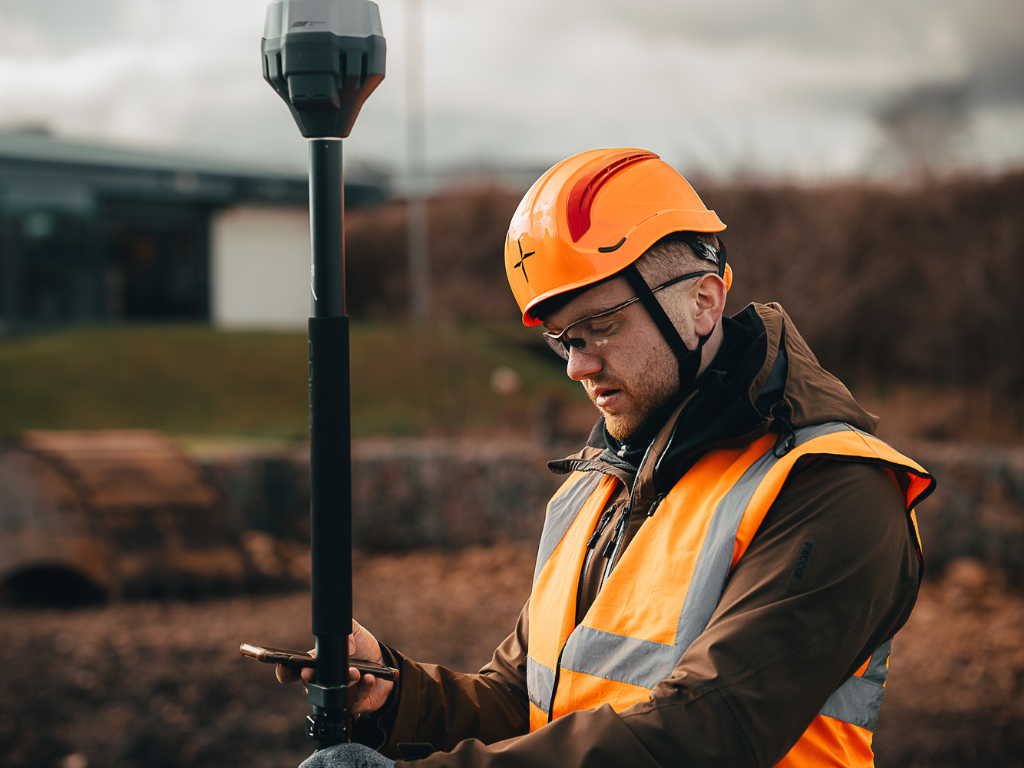
Technical
Absolute Vs Relative Accuracy For Drone Surveying
Learn the key differences between absolute & relative accuracy to make more informed decisions for your projects.
The surge in demand for accurate geospatial data highlights the importance of choosing between High Absolute and Relative Accuracy.
Find out the difference between Absolute and Relative Accuracy and how they impact/benefit your surveys.
How RTK and PPK can help increase accuracy.
In the fast-evolving field of drone surveying, accuracy is a critical factor in determining project success — but while the term is used frequently, not all types of accuracy are the same.
Understanding the different types of accuracy is crucial to ensure you're collecting the right data for your projects. In this blog, we’ll explore two commonly used terms — relative accuracy and absolute accuracy — which refer to different aspects of the data collected by a drone
What does relative & absolute accuracy mean?
Relative accuracy refers to how consistent measurements are within a dataset — even if they’re slightly offset from their true real-world positions. It measures how well points relate to each other, rather than to a global coordinate system.
Ideal for internal site monitoring, volume calculations, and progress tracking.
Usually high even without using ground control points (GCPs), making it faster and more cost-effective.
Suitable when precise global positioning isn't essential.
Absolute accuracy is how closely your drone survey data matches real-world coordinates, such as GPS positions or known benchmarks. This assesses how accurately features are positioned on the Earth’s surface relative to their true geographic locations.
Critical for topographic mapping, infrastructure planning, and meeting regulatory requirements.
Achieved using Ground Control Points (GCPs), or drones equipped with RTK or PPK systems.
Necessary when combining data from multiple surveys over time.
Check out the graphic below for a visual example:
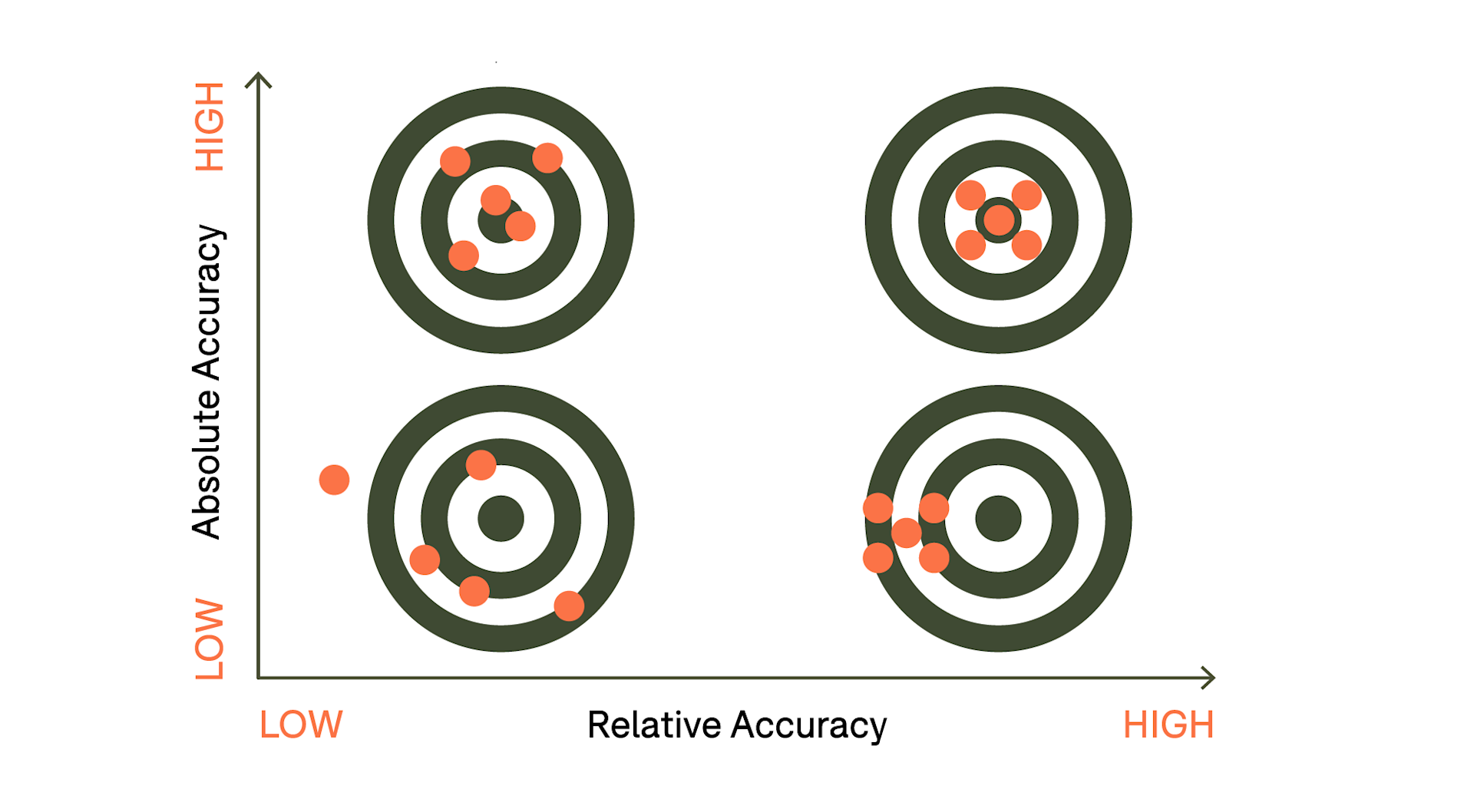
High absolute accuracy in drone surveying ensures the data matches real-world coordinates, building trust in applications like mapping and infrastructure planning. Whereas, high relative accuracy improves consistency within datasets, supporting reliable spatial analysis and better decision-making across the surveyed area.
Both types of accuracy are important for getting the most value from drone data across different industries.
Accuracy in drone surveying
DJI drones use onboard sensors like accelerators, gyros, and magnetometers to maintain flight stability and deliver reliable relative accuracy.
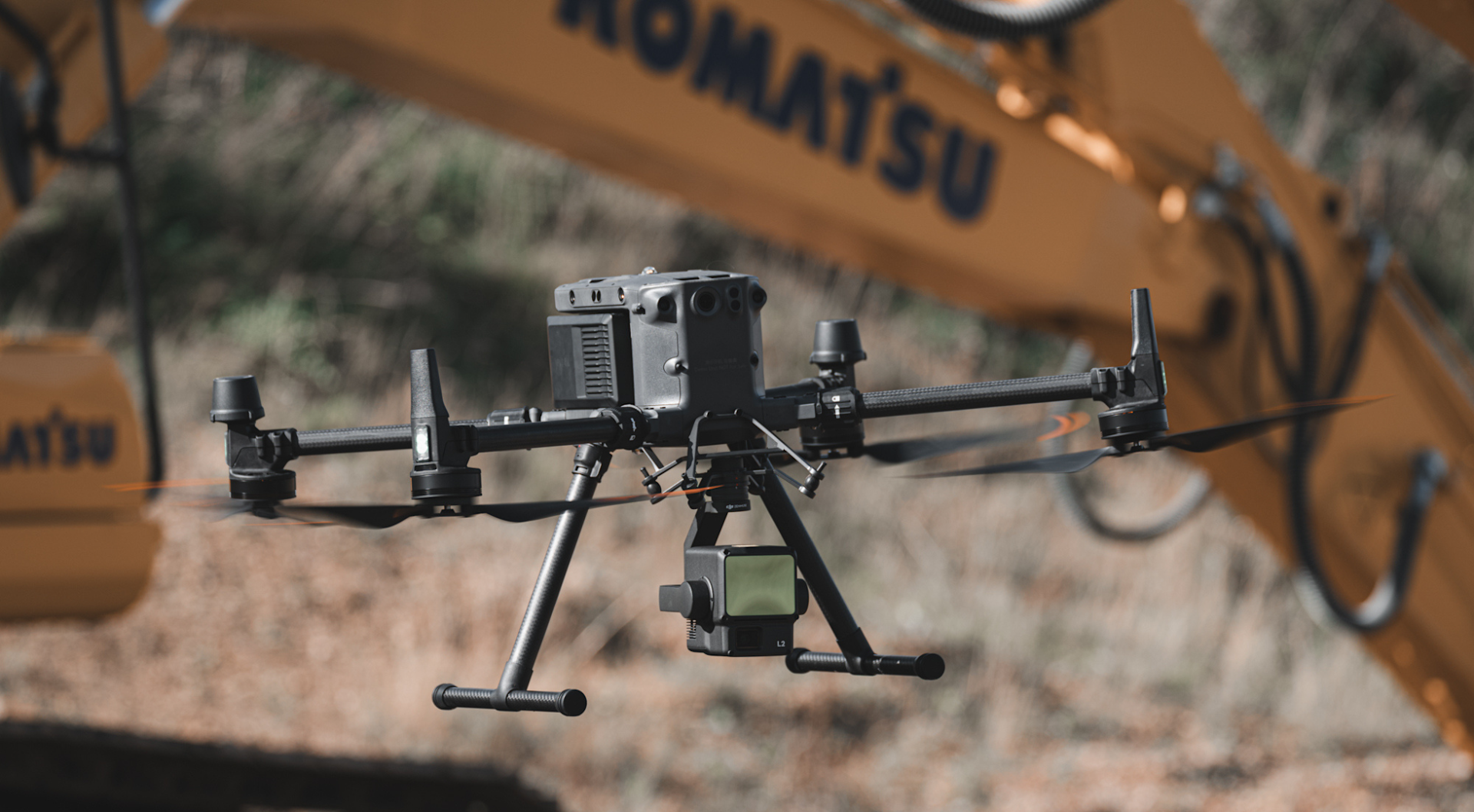
Your measurements will be accurate within the dataset but may not align with a global coordinate system — especially along the Z-axis, where offsets are common. To achieve both high relative and absolute accuracy, you can use an RTK or PPK workflow.
RTK corrections are sent to the drone in real time, while PPK corrections are applied after the flight using data from a local base station.
Accuracy Vs Precision In Drone Surveying
Before we dive into Relative vs Absolute Accuracy, let's first explore the differences between accuracy and precision, as these are two ways that surveyors can think about errors.
Accuracy: Accuracy refers to how close the measured values are to the true or known values. In drone surveying, accuracy assesses the correctness of the geospatial data collected in relation to the real-world coordinates.
Precision: Precision refers to the consistency and repeatability of measurements when taken repeatedly under the same conditions. In drone surveying, precision evaluates the reliability and reproducibility of measurements within the dataset.
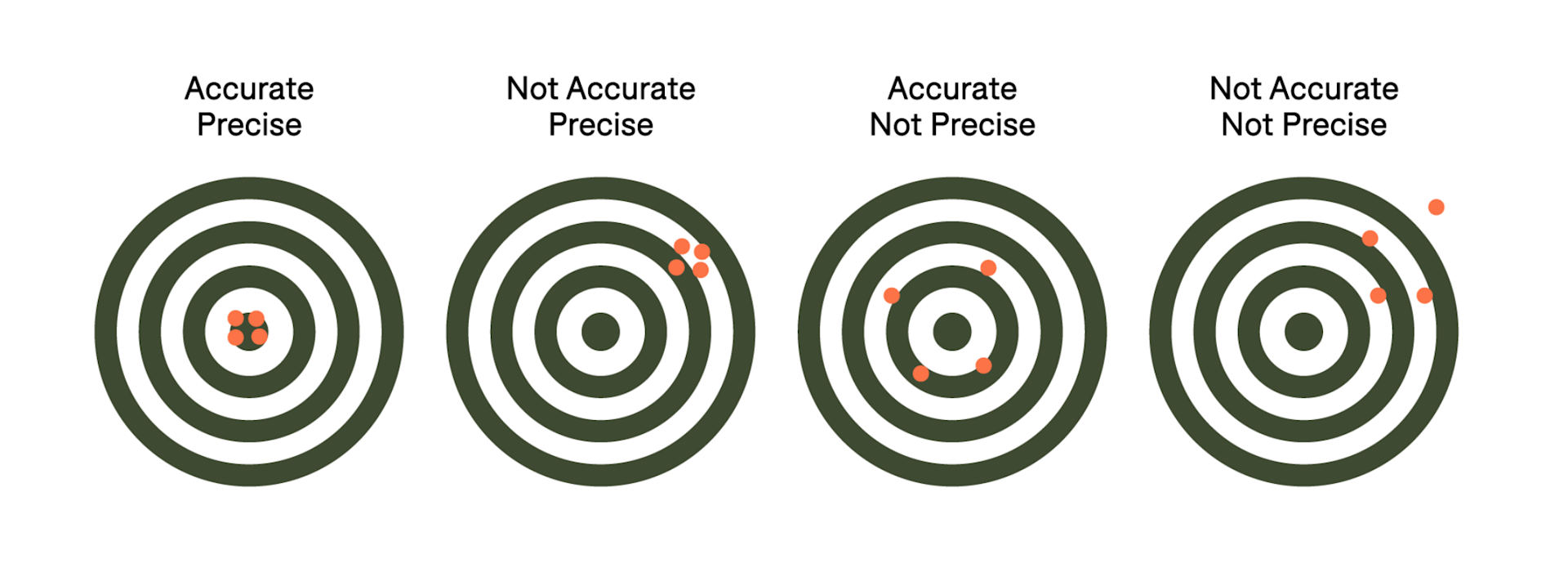
In the context of Relative Vs Absolute Accuracy:
Relative accuracy focuses more on precision rather than accuracy. It emphasizes the consistency of measurements relative to each other within the dataset.
Absolute accuracy prioritises both accuracy and precision. It ensures that the collected data closely align with true or known coordinates in the real world.
Understanding Relative Accuracy
The level of accuracy you need depends on what you are surveying and why.
For a general inspection, you may only require relative accuracy to conduct comparisons and analysis within a specific dataset.
Applications such as monitoring changes in vegetation, tracking construction progress, stockpile calculations, or assessing the impact of natural disasters are well-suited to this level.
Relative accuracy is suitable because these applications require accurate data for a specific section of land, not necessarily its exact location on a global level.
For example, if you are tasked with determining the distance between buildings and apparatus on a construction site, relative accuracy would give you the most relevant data without any additional reference points.
Benefits of Relative Accuracy
Rapid Deployment: Without extensive ground control and surveying, you can swiftly deploy your drone with no fuss, which is ideal for situations where time is of the essence.
Flexible Data Collection: Relative accuracy allows for more flexibility as no set ground points exist, giving you better adaptability in the air. (rescue missions- elaborate)
Sufficient Intra-Dataset Comparisons: Reliable surface-level data, ideal for missions where the primary goal is to compare and analyse features within the same dataset.
Localised Mapping: When conducting a mission in a small area such as the countryside, you likely do not require precise global geographical data points of high absolute accuracy.*
*Depending on the type of survey, for example, topographical mapping in the countryside will require a coordinate system.

Understanding Absolute Accuracy
High absolute accuracy becomes necessary when you need precise coordinates and more in-depth data for comparing data over long periods.
Achieving high absolute accuracy is important for surveying, mapping, and any mission that requires more specific data, such as georeferenced data, precision architecture, topographical mapping, and projects that require data that meets standardisation and regulation compliance regulations.
A popular use of high absolute accuracy is tracking data from surveys over time, as this level of precision shows you exactly how much an area/building has improved or deteriorated over time by demonstrating the visual differences and following the exact coordinates of every mission.
Benefits of High Absolute Accuracy
Interoperability and Integration: High absolute accuracy allows for seamless integration of your drone’s survey data with other geospatial datasets, creating comprehensive maps or conducting analyses that span large areas.
Legal Compliance: Many industries, such as construction, agriculture, and environmental monitoring, have strict standards and regulations to adhere to, and high absolute accuracy ensures you meet these rules.
Survey Control and Ground Truthing: This is particularly important for large-scale projects where ground truthing is necessary to validate and refine the survey results.
Long-Term Comparisons: When conducting surveys over time, high absolute accuracy ensures consistent measurements, which is essential for monitoring changes in landscapes, infrastructure, or environmental conditions over extended periods.
Precision Agriculture: High absolute accuracy is vital for crop monitoring, yield prediction, and variable rate application of resources, enabling farmers to make informed decisions based on accurate spatial information.
There are two options to achieve high absolute accuracy: RTK or PPK.
RTK and PPK
RTK and PPK are indispensable to drone surveying for refining geospatial data accuracy.
RTK operates by utilising real-time differential correction to refine GPS positioning data, employing a base station with known coordinates to transmit correction signals to the drone in the field, or by using an NTRIP RTK licence.
It ensures centimetre-level precision by adjusting the drone's position during flight, making it ideal for applications requiring immediate data feedback, applying accurate spatial information from the satellites to the photos the drone takes rather than adjusting the aircraft's position. It also improves connectivity and stability during flight, but primary focus is as said in green above.
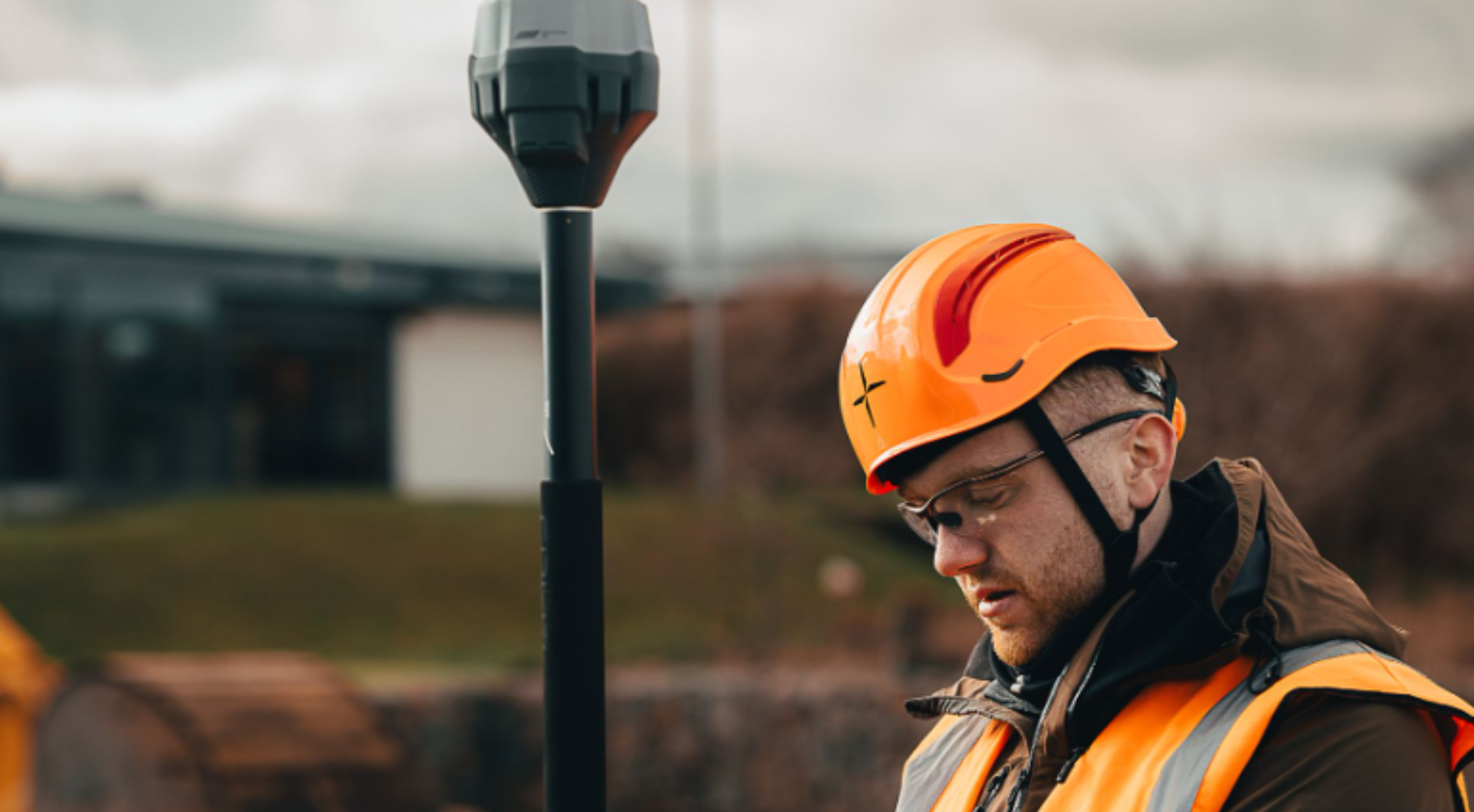
On the other hand, PPK corrects GPS errors after data collection, processing raw GPS data from the drone alongside information from a stationary base station.
This post-processing technique offers flexibility as it doesn't depend on real-time communication and can achieve levels of accuracy similar to RTK.
The choice between RTK and PPK hinges on project requirements, operational constraints, and available resources.
RTK is advantageous for real-time adjustments and immediate feedback, PPK offers flexibility and comparable accuracy through post-processing, making it suitable for projects with less stringent time constraints. It is also good for users who don’t have access to an internet connection and NTRIP.
To learn more about RTK and PPK, please look at our blog, 'RTK Vs PPK.’
Which level of accuracy do you need?
Fundamentally, what level of accuracy is best for you comes down to three main factors:
Purpose of mission? What are you looking to find out?
Is this a one-off or regular task? How often will you be carrying out this/these missions?
Available time and budget? How much time and money can you afford?
If you're working on land development, legal boundaries, or detailed engineering work, absolute accuracy should be your priority.
For tasks like tracking stockpiles, monitoring site changes, or comparing project phases, relative accuracy is often sufficient.
Choosing the right type of accuracy for your needs can save time, cut costs, and support better decisions. Using the wrong workflow can lead to errors — as shown in the image on the bottom.
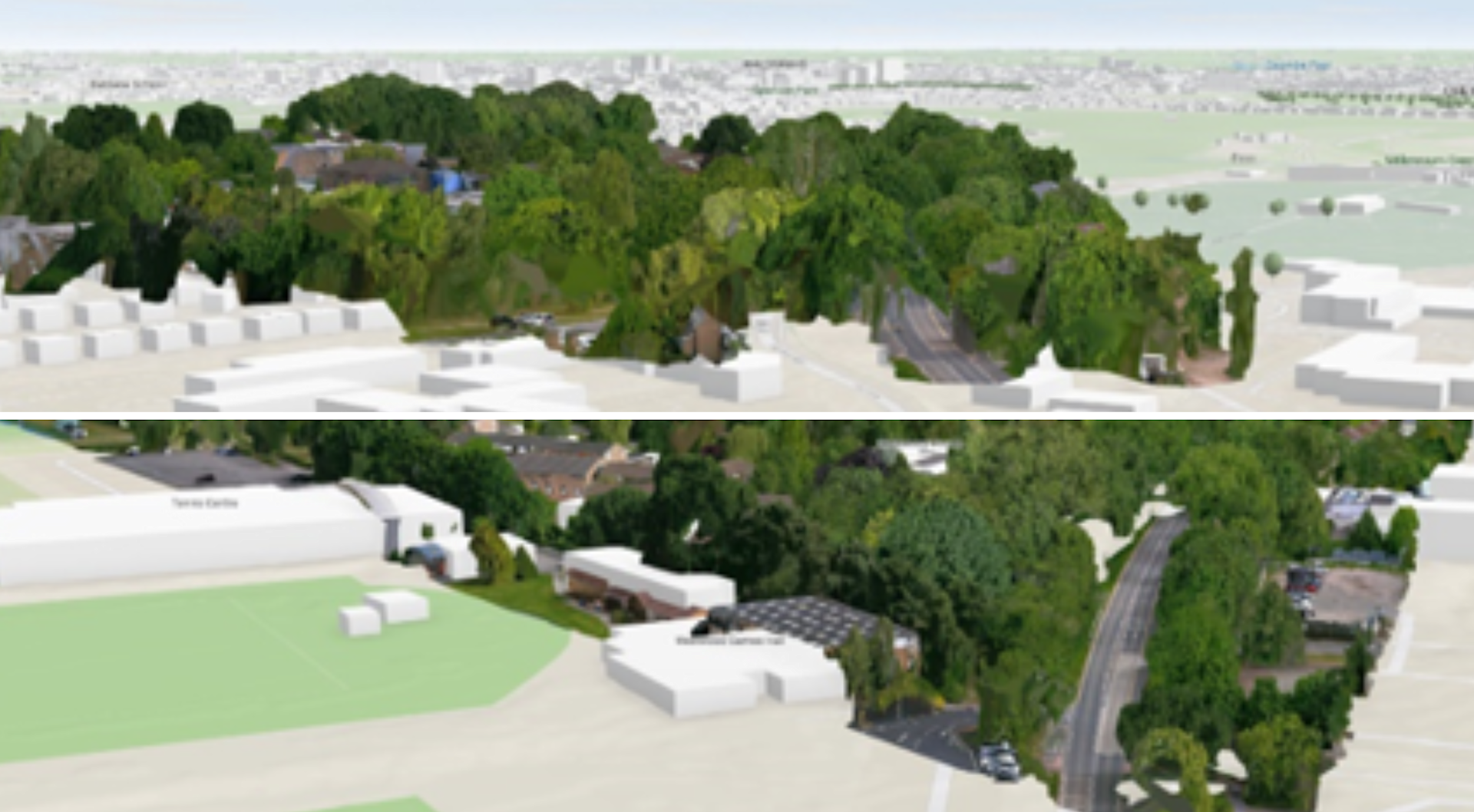
Tips for achieving your desired accuracy
Use this table to decide the best action to achieve your ideal accuracy type.
Level of accuracy required | How to achieve it |
|---|---|
High Absolute Accuracy | Connect to your own DJI D-RTK2 or 3 base station via (LORA) radio and ensure the base station is installed over a known point. Next, add measured GCPs into the software to align the model with these more accurate points. Or use EMLID NTRIP Caster - EMLID RS3 and broadcast corrections to the drone over the internet and position it over a known point. |
Relative Accuracy | Draw the mapping boundary and launch the mission. The data processed using drone mapping software - DJI Terra etc. |
High Relative Accuracy and Low Absolute Accuracy | Set up a base station anywhere that is best for you. |
High relative and absolute accuracy. | Set the base station to known points; this could be marked with a GNSS Receiver, such as an Emlid RX or EMLID RS3. heliguy™ always recommends Emlid as it is three times more accurate than drone data. GCPs must be marked with a device that is at least 3 times more accurate than the geospatial data being tested and traversed with a total station as a part of the control network. |
Summary
High absolute accuracy is essential for projects that require precise positioning, legal compliance, or routine inspections. By understanding the differences between absolute and relative accuracy, drone surveyors can choose the right approach to meet the specific needs of each project.
Want to know more about aerial survey drones or training? Get in touch with our survey team — we're here to help.
